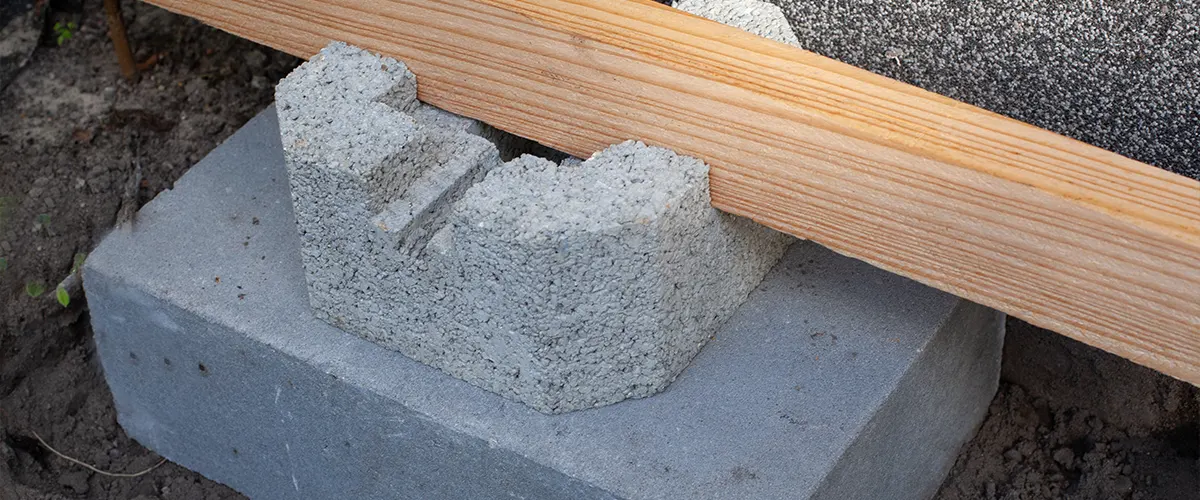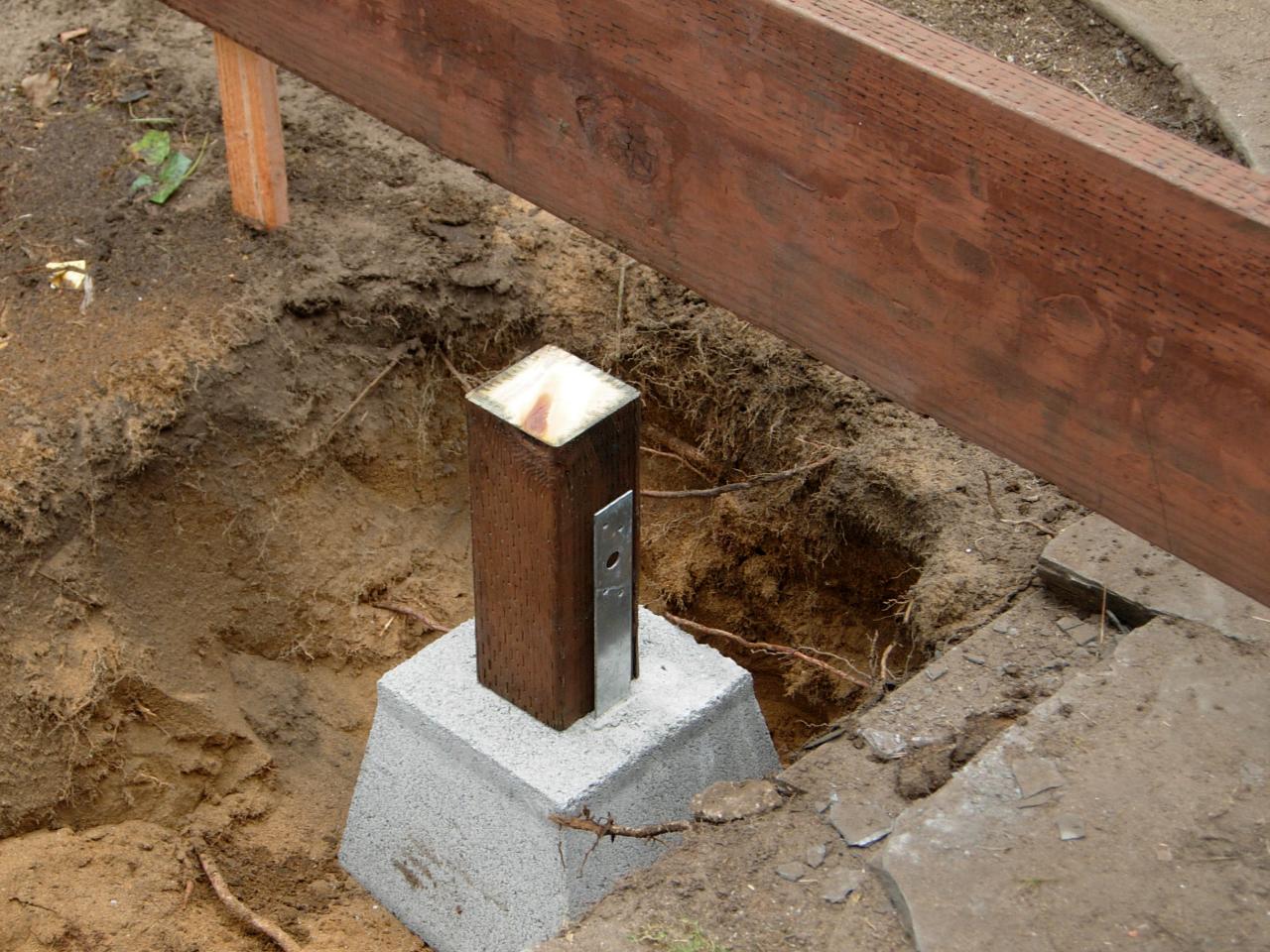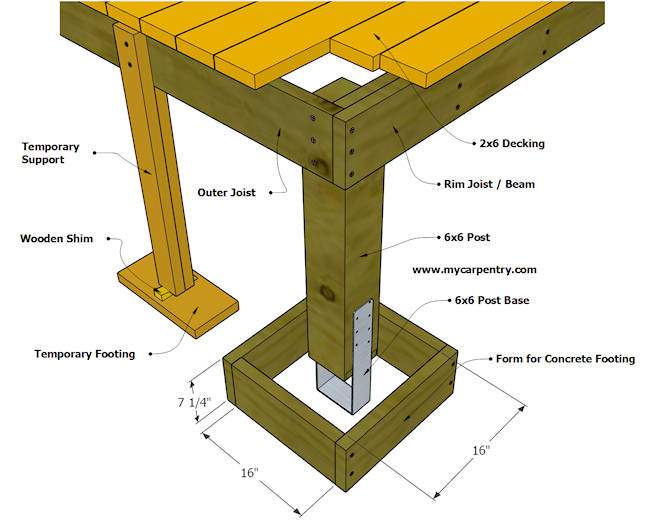Professional Tips for Putting Up Deck Footings to Support Your Outdoor Space
When it comes to developing a deck, one of the most essential aspects to think about is the installment of correct grounds. These grounds are the structure upon which your exterior area will rest, supplying stability and support for years to come. What exactly does it take to mount deck footings properly?
Value of Appropriate Deck Footings
Proper deck grounds are necessary for making sure the stability and longevity of your outside space. Without solid and correctly set up footings, your deck might become unpredictable, leading to security risks and pricey repair work.

In enhancement to security, correct deck grounds additionally add to the longevity of your exterior room (Deck Footings). Grounds that are created and built to endure the elements and soil conditions in your location will aid stop the deck from shifting or settling over time. By making certain the footings are properly sized and installed, you can lessen the risk of damages to the deck structure, extending its life-span and minimizing the need for costly repairs or substitutes

Selecting the Right Sort Of Grounds
When choosing the proper kind of footings for your deck, it is necessary to think about variables such as dirt problems, local structure codes, and the total style of your outdoor space. The kind of footing you pick will play a vital function in making sure the stability and long life of your deck.
One usual kind of ground is the concrete ground. Concrete grounds are suitable for a lot of soil conditions and supply exceptional assistance for decks.
In many cases, you might require to make use of customized grounds, such as stack footings or deep structures, if you are building a huge or multi-level deck. These footings are designed to disperse the weight of the deck over a larger location, ensuring security and protecting against sinking or settling.
Prior to picking a kind of footing, it is vital to speak with regional building codes and regulations to ensure conformity. In addition, take into consideration the layout and meant use of your exterior area. Aspects such as the dimension, shape, and load-bearing needs of your deck will certainly influence the kind of footing that is most suitable.
Preparing the Ground for Footing Installment
To effectively prepare the ground for footing setup, it is important to analyze the dirt problems and take required actions to make sure stability and sturdiness of the deck. The initial step is to excavate the location where the footings will be installed. The deepness of the excavation will depend upon the frost line in your region and the certain demands of the deck design. It is important to remove any type of greenery, rocks, or debris from the excavation to make certain a solid structure.
As soon as the area has been dug deep into, the following step is to small the dirt. This can be done making use of a plate compactor or by utilizing a hand tamper. Condensing the dirt helps to remove any type of gaps or air pockets, which can bring about working out and instability over time.
After compacting the dirt, it is important to lay a layer of gravel or crushed rock at the base of the excavation. This will supply drainage and aid to avoid water from pooling around the grounds, which can result in erosion and instability.
Step-by-Step Overview to Installing Deck Footings
After appropriately preparing the ground for footing installment, the following step is to begin the process of installing deck footings. This detailed guide will certainly supply you with a clear understanding of just how to mount deck grounds for your outside room.
Identify the place: Begin by marking the positions of the deck grounds utilizing risks and string. Make sure that the places straighten with the style and design of your deck.
Dig the holes: Use a message hole digger or an auger to dig the holes for the footings. The deepness and size of the openings should be in accordance with neighborhood building regulations and the details requirements of your deck style.
Degree the openings: Use a level to make certain that the holes are look at here dug to the correct deepness and are degree with each various other. (Deck Footings)
Add gravel: Place a layer of crushed rock at the end of each hole to improve drainage and prevent the timber from rotting.
Insert the grounds: Place the footings right into the holes, seeing to it they are level and plumb. Utilize a level and a measuring tape to make certain precision.
Secure the grounds: Put concrete into the holes around the grounds, loading them to the top. Make use of a blog post level to make certain the grounds stay level as the concrete collections.
Enable time for curing: Allow the concrete treatment according to the supplier's directions prior to waging the deck construction.
Usual Errors to Stay Clear Of During Footing Installment
One essential aspect to think about during the setup of deck footings is preventing common errors that can compromise the security and durability of your outdoor area. While deck footings may feel like a straightforward and basic part of the building procedure, forgeting specific variables can result in pricey repair work and potential safety risks down the line.

Additionally, disregarding to set up proper drain measures can trigger water to accumulate around the footings, leading to rot, degeneration, and the eventual weakening of the deck's foundation. Utilizing the wrong kind of footing product or stopping working to sufficiently secure the footings can jeopardize their architectural integrity.
To prevent these mistakes, it is vital to seek advice from a specialist or follow market standards to make certain correct ground installment. By doing so, you can ensure the stability and durability of your outside room, providing a enjoyable and safe environment for many years ahead.
Verdict
To conclude, installing proper deck footings is important for the security and long life of your outdoor space. By choosing the right type of footings and effectively preparing the ground, you can ensure a solid structure for your deck. Adhering to a detailed overview and staying clear of usual blunders throughout footing setup will certainly additionally enhance the longevity and safety and security of your deck.
Appropriate deck grounds are important for guaranteeing the stability and longevity of your exterior space. The footings offer as a link between the deck and the ground, allowing the weight of the deck and its residents to be distributed evenly right into the dirt.One typical type of footing is the concrete ground. Put the grounds: Put the footings right into the great post to read openings, making certain they are level and plumb. Safeguard the grounds: Pour concrete into the holes around the grounds, filling them to the top.